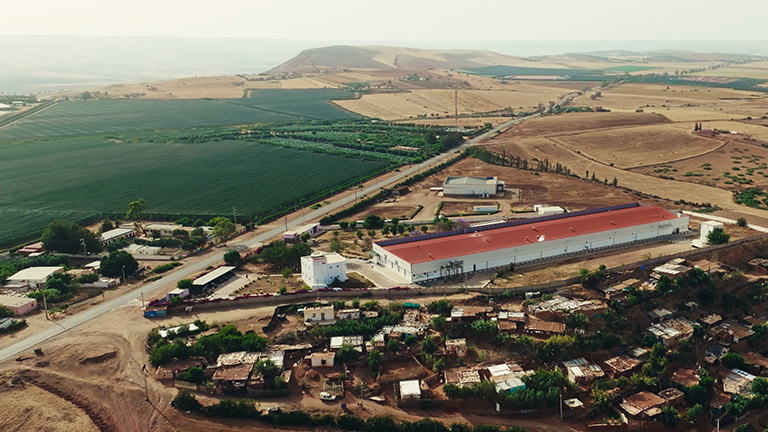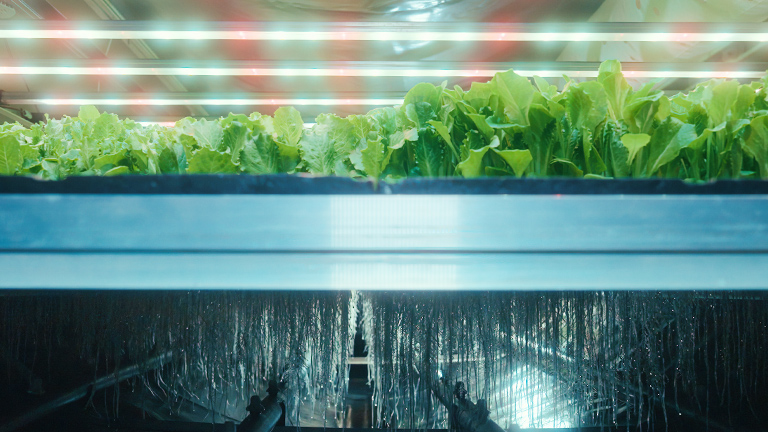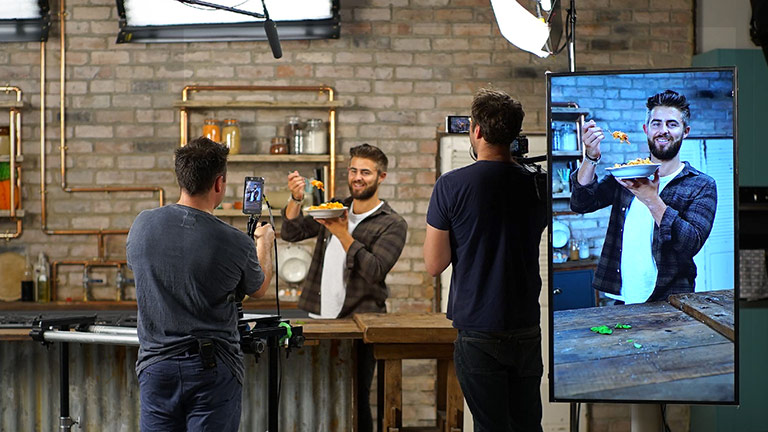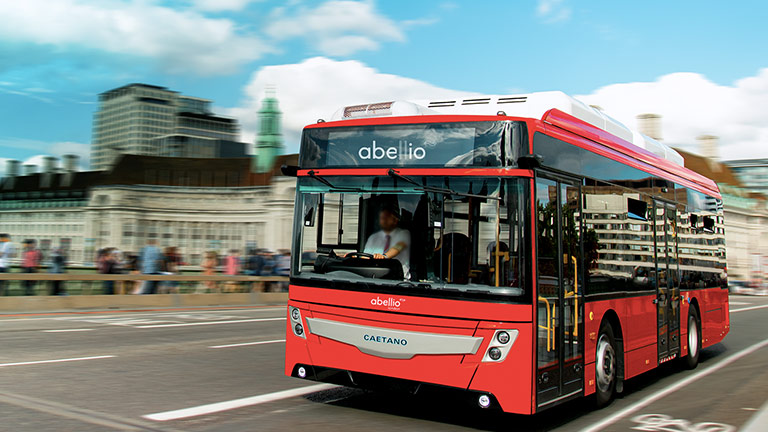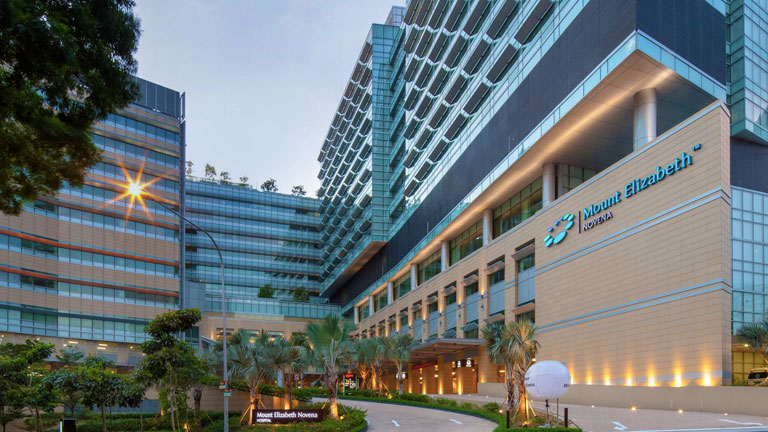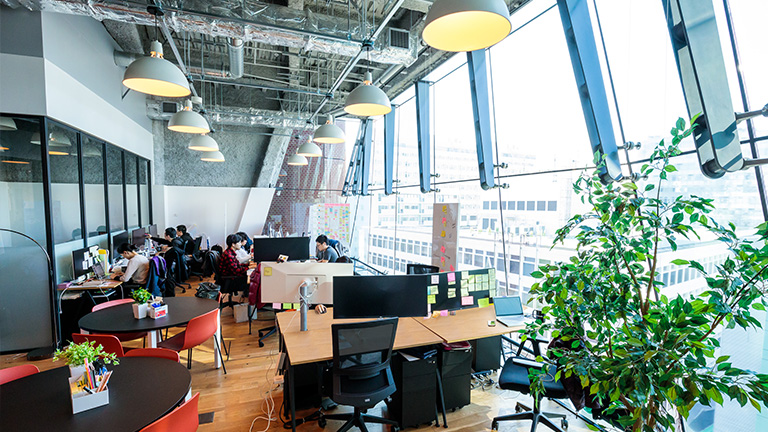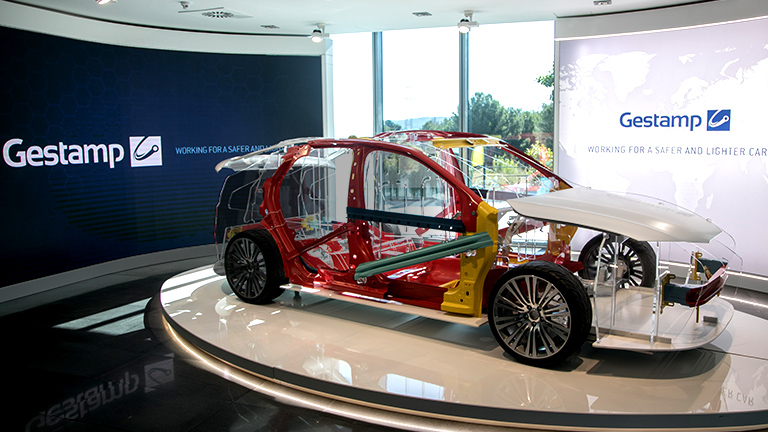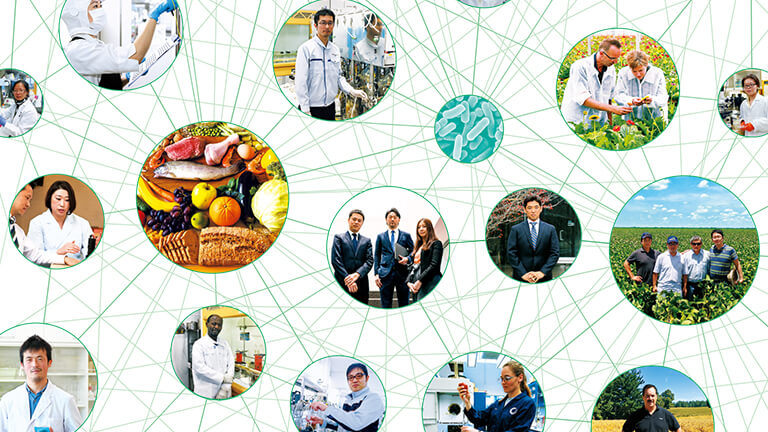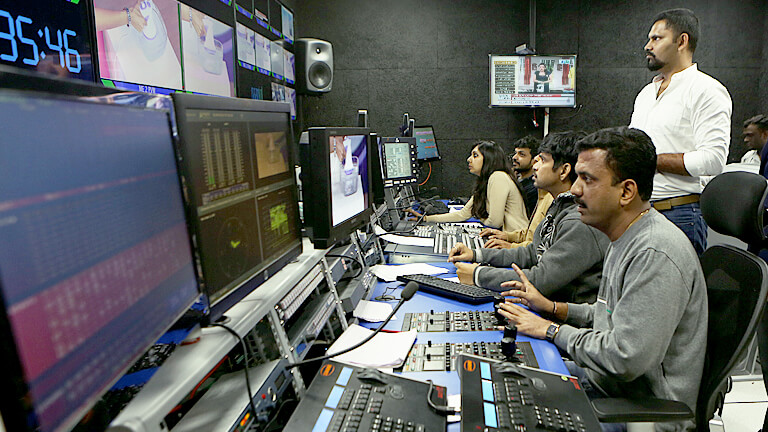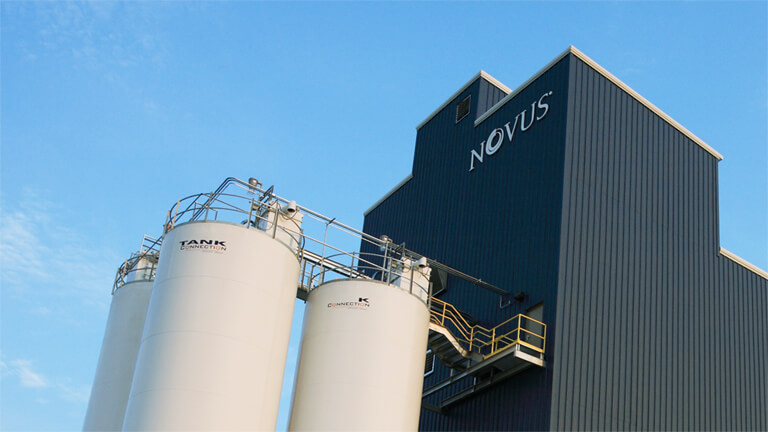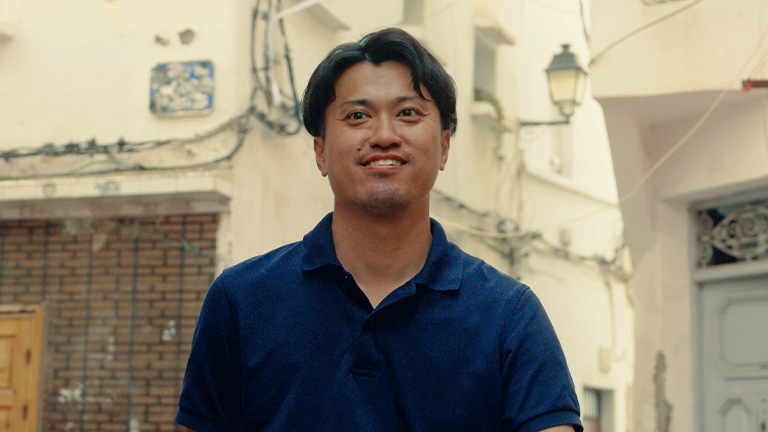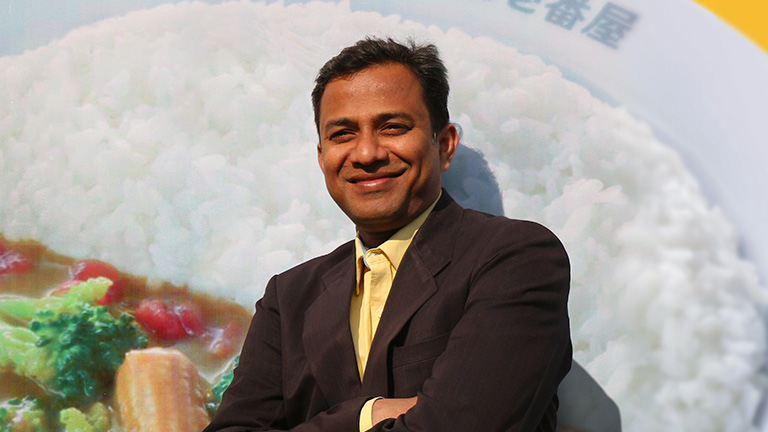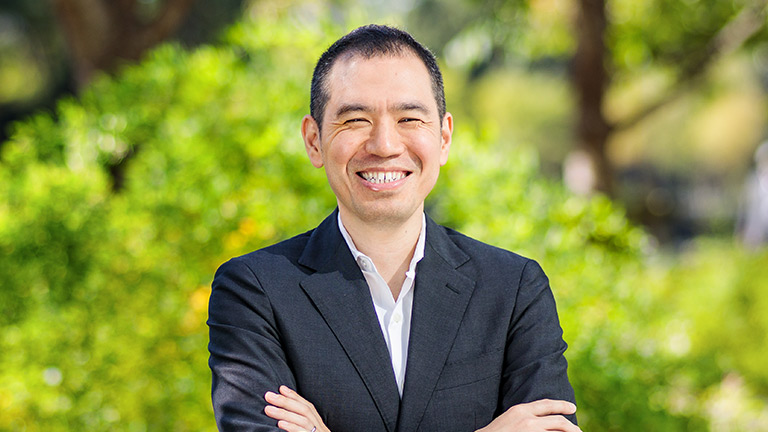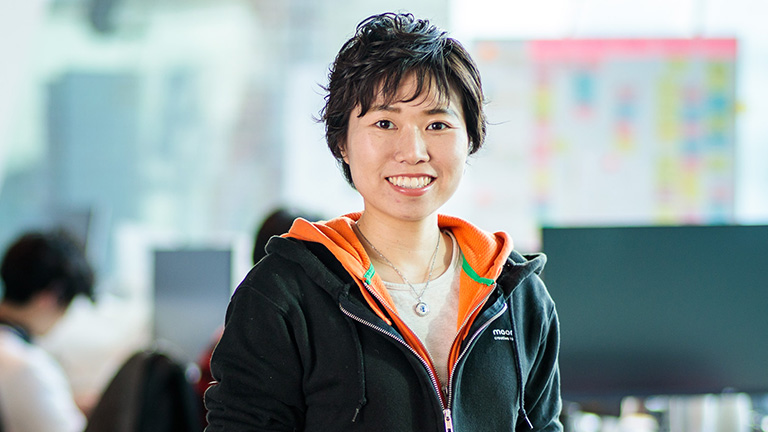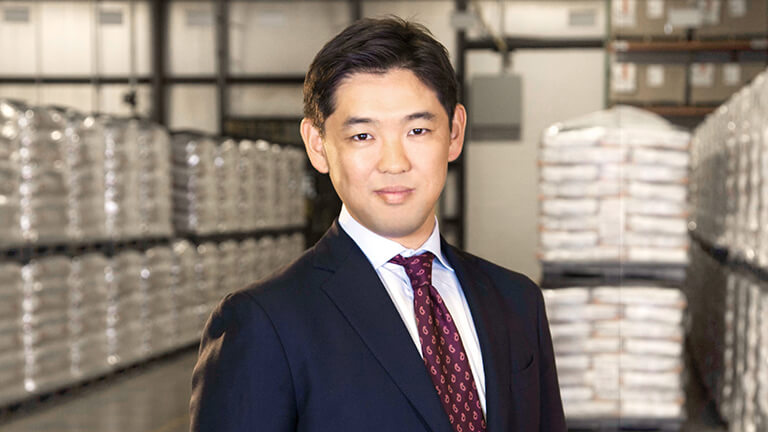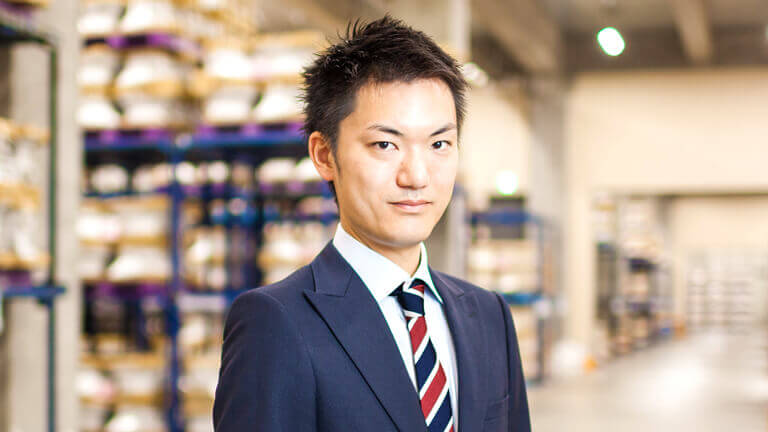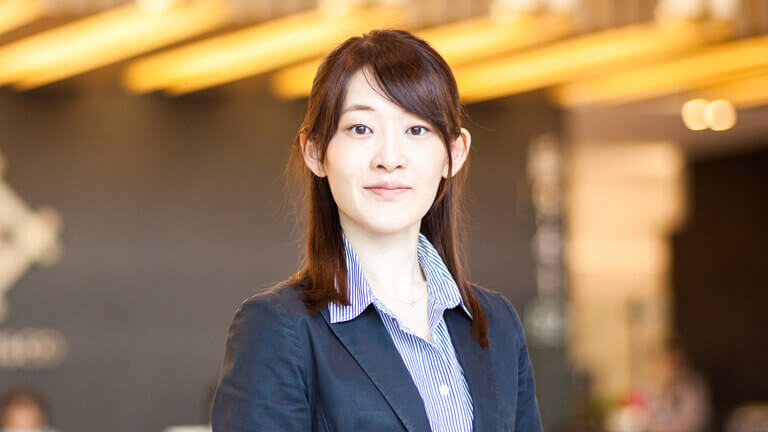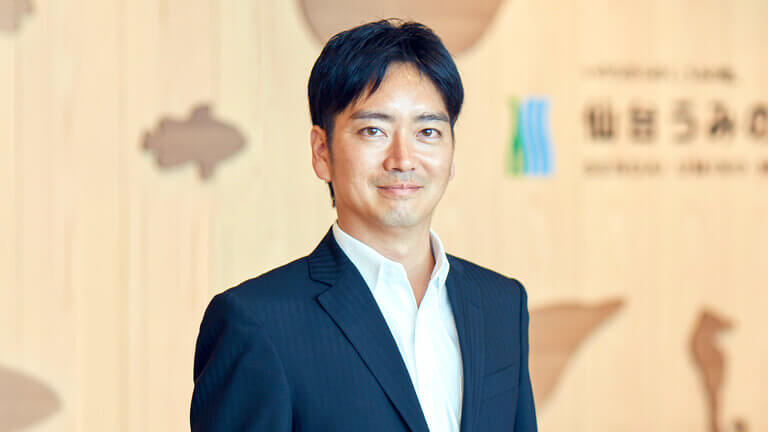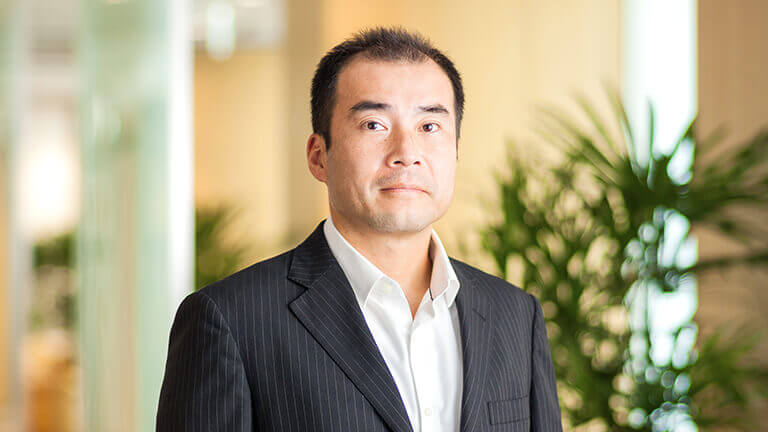
People
Prasenjit Adhikari
CEO, ICHIBANYA INDIA PRIVATE LIMITED
A 20-year-plus veteran of Mitsui India, office administration specialist Prasenjit Adhikari has taken on what may be the toughest challenge of his career: bringing Japanese curry to India.
Bringing curry home
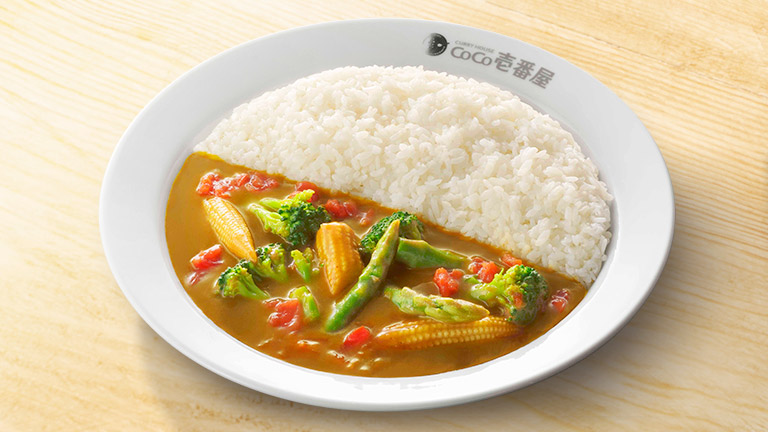
Back when the British ruled India, local traders used to sell them curry and spices. The British then took this curry home with them to Great Britain. Later, they brought it to Japan in the late 19th century. Curry, in other words, came to Japan via a very roundabout route. As a result, Japanese curry is quite different from Indian curry, but it’s still very good!
That’s actually how this venture started. There was this guy, Robin Srivastava from the Mineral & Metal Resources Division in New Delhi, who was seconded to Mitsui Head Quarter in Tokyo. After Robin got back to India in 2017, he used to talk to us about life in Japan. He often ate lunch at a Japanese curry chain called CoCo Ichibanya, where he was particularly fond of the chicken katsu curry.
In fact, Robin thought Japanese curry was so good it could find a market here in India. That’s when we started to think seriously about the business opportunity. Mitsui India contacted Ichibanya Co., Ltd. and talks got under way. By a lucky coincidence, Ichibanya had just opened a restaurant in London. They were keen to open in India, as that would mean they had joined all the dots and “brought curry home.”
I should tell you a bit about Ichibanya. It’s a Japanese company that opened its first restaurant in Aichi in 1978, and started its foreign expansion in 2005. It was certified as the world’s largest restaurant curry chain by Guinness World Records in 2013. Now it’s got more than 1,250 restaurants in Japan and over 185 in the rest of the world*.
* as of Jan., 2020
Two partners: one goal
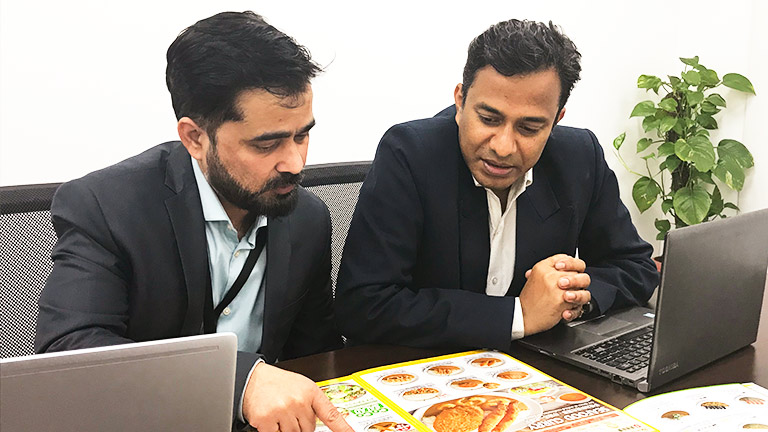
Ichibanya saw a partnership with Mitsui as a good route into the Indian market, so both sides were interested in doing a deal. In June 2019, we established a joint venture to develop the Indian business, with myself as CEO.
Mitsui set up a project team and invited our Ichibanya counterparts to come to India. We took them around Delhi for a reconnaissance. We visited different malls and showed them the various food options. What you have here is Indian food, rather inauthentic Chinese food, and burgers and fried chicken. There are very few Japanese restaurants; for Indians, Japanese food is sushi and nothing else!
The project team members divided up the tasks according to their area of expertise, but we all worked on pinpointing the most high-footfall locations. Then we put together a business plan.
There are two sides to setting up a restaurant: food-preparation and location. On the food-preparation side, I visited the CoCo Ichibanya restaurant in Hong Kong and was taken behind the scenes there. I was impressed by the speed and efficiency of operations.
Back in India, we met various food companies and got them to make samples for the curry and toppings. The whole project team had fun doing the tasting. We’re all different—vegetarians, non-vegetarians, bread-eaters, rice-eaters—but we worked together to get a consensus. One of the things that makes CoCo Ichibanya so popular is the freedom it gives people to choose different toppings and create their own personalized curry. We wanted to add a small “essence of India” to the menu, so here we are offering paneer [cottage cheese] as a curry topping, for example.
One reason I’m confident about moving into the food industry is that I’ve been cooking twice a day ever since I was a boy. My mum was a schoolteacher and I cooked egg curry for her to give her a break and to get leverage so she would let me go and play table tennis!
Location. Location. Location
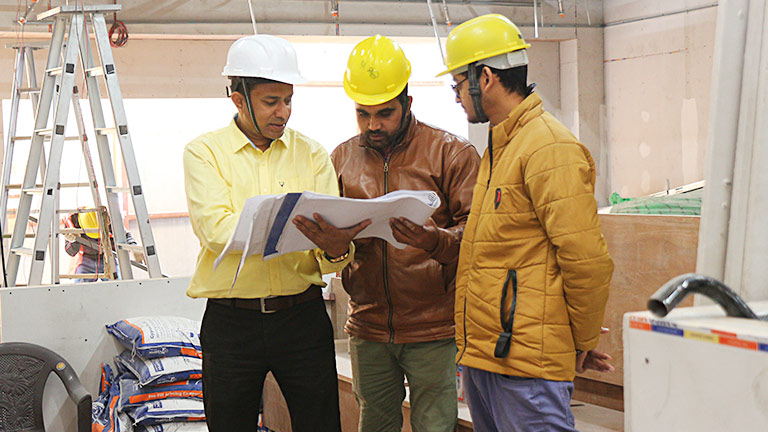
I said the restaurant business had two sides. The other side is shop location. We had to find a busy food destination, but securing the best location is hard. Rents are high and there are long waiting lists. It’s a seller’s market. The prospective tenant makes a presentation about their brand, and if the landlord likes you, then they may give you the chance to bid for a location.
We ended up securing a location in Gurugram, a newly developed city in the Greater Delhi Capital Region, in August 2019. The place, DLF Cyber Hub, is a food destination with more than 50 restaurants, pubs and cafés. It’s surrounded by office blocks that are home to Big Tech and global companies.
I’ve been with Mitsui for 23 years. I have a lot of experience in finding offices for the company, fitting them out and sometimes selling them on all, around the country. I just managed our move to a new office in Delhi’s Aerocity. The goal was to get a lower rent and put everyone on a single big floor, rather than spread over multiple floors. The project took almost a year. It was the toughest thing I’ve done. Still, my background in real estate has definitely been useful when it came to finding the location for our first restaurant.
A wild card entry to Mitsui
Before joining Mitsui, I worked for a lifestyle store inside a luxury hotel. That gave me exposure to the B2C business, plus I got to meet plenty of Japanese businesspeople. I joined Mitsui India in 1997 in response to a newspaper ad. The job on offer was actually in the steel division, but they created a new job for me in administration. I was a bit of a wild card entry!
The switch I’ve just made from administration/corporate planning to the restaurant business is also a big change—but it’s exciting precisely because it’s so different. We’re due to open the first restaurant in spring 2020. I’m excited to see how our first Indian customers will respond.
India is one of the world’s largest consumer markets with a huge population and a booming economy. The consumer business is a major new focus for Mitsui India. In the medium term, I’m hoping we can expand to several outlets in Delhi and other tier-one cities like Bengaluru, Mumbai, Kolkata and Chennai. I’m keen to build brand awareness for CoCo Ichibanya and get the message out that “curry has come back home.”
Posted in March 2020
